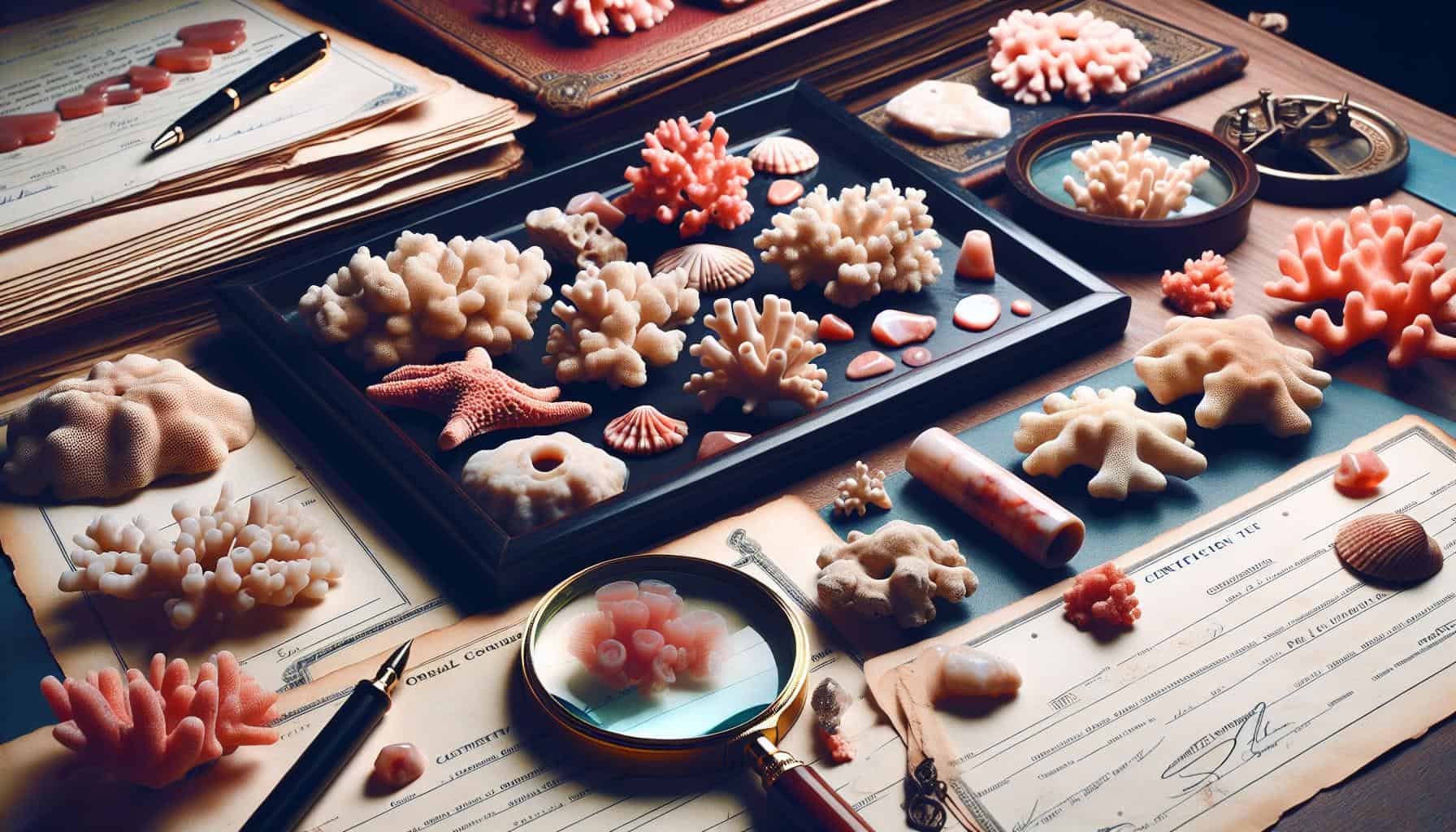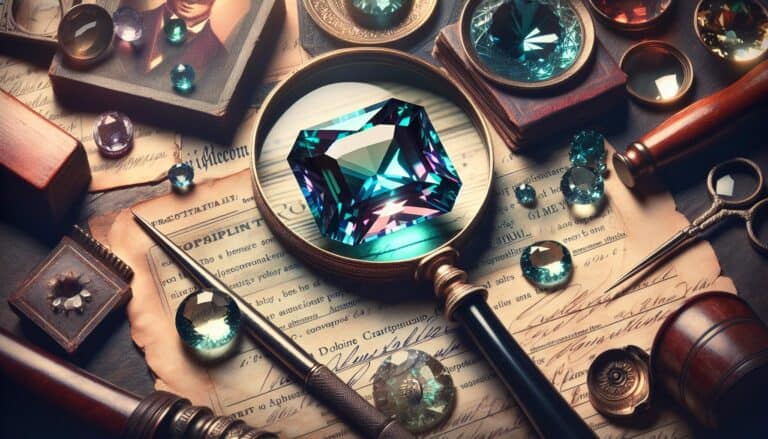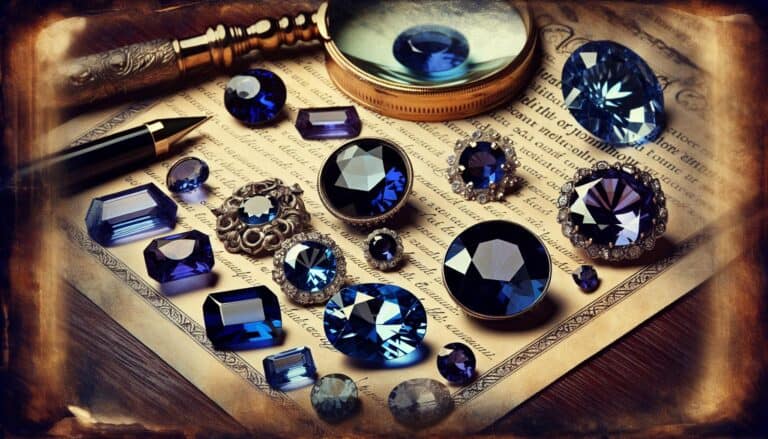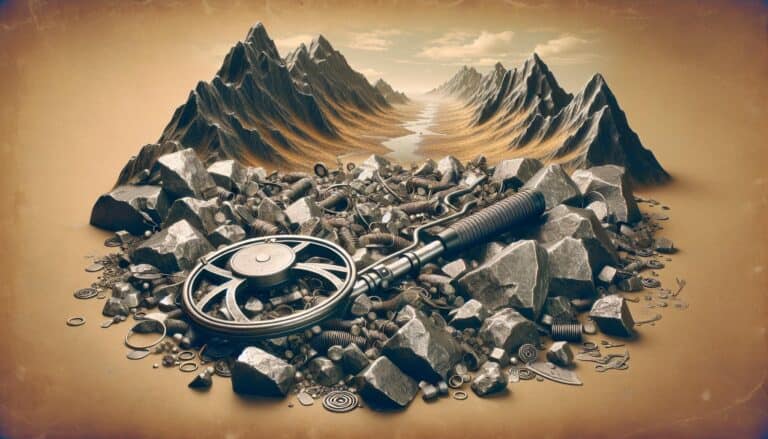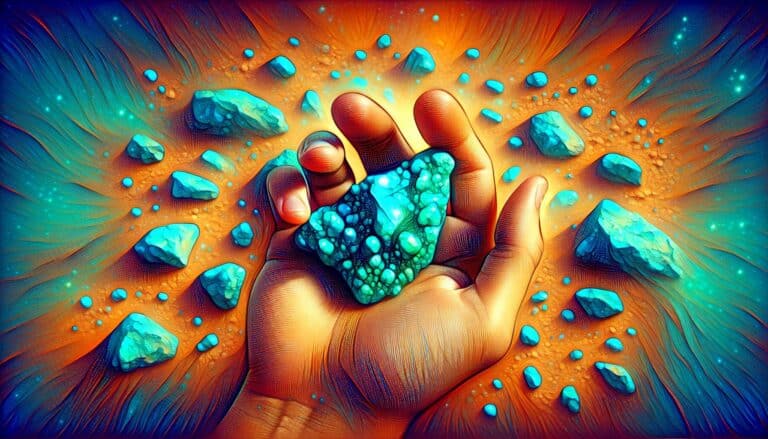Ever wondered about the value of the vibrant corals that adorn the ocean’s depths?
You’re not alone. Coral’s worth extends beyond its ecological importance, capturing the interest of collectors, jewelers, and environmentalists alike.
From the rare red coral favored in fine jewelry to the more common coral species used in aquariums, prices can vary widely. Let’s dive into the factors that determine coral’s monetary value and why these marine treasures are worth more than you might think.
Understanding coral’s worth isn’t just about dollars and cents; it’s about recognizing the priceless role it plays in our marine ecosystems. So, before you consider buying coral or marvel at its beauty, let’s explore what makes it truly valuable.
Coral’s value depends on color, clarity, rarity, and origin. Red coral is most valued, while soft corals typically fetch lower prices. Rarity, heightened by environmental changes and overharvesting, significantly impacts coral’s worth. Sustainable, legally harvested coral is priced higher, reflecting its scarcity and ecological importance.
What Is Coral?
Coral is much more than the vibrant underwater decoration that you might initially picture. In essence, coral constitutes an ecosystem paramount to marine life. It’s a living organism known as a coral polyp. These polyps form colonies that grow over decades and can produce the massive, colorful reef structures you see in documentaries and scuba diving excursions.
These reef builders are in a mutual relationship with tiny algae called zooxanthellae. The algae reside within the coral tissues, offering them a kaleidoscope of colors and vital nutrients through photosynthesis. In return, coral provides a protected environment and compounds necessary for the algae’s survival. This symbiotic relationship is what permits coral reefs to thrive in nutrient-poor tropical waters, creating one of earth’s most diverse ecosystems.
Varieties of Coral
Corals come in two main types: hard and soft. Hard corals, also known as stony corals, are the architects of coral reefs. They secrete a rocky substance called calcium carbonate, which forms the sturdy structure that contributes to reef building. Soft corals, like sea fans and sea whips, are flexible because they don’t produce this hard skeleton. Instead, they’re often found in shallower, more turbulent waters where their malleable structures can sway with the currents.
When evaluating coral’s worth, hard corals are particularly valuable. They are often sought after in the aquarium trade for their longevity and structural benefits to tank ecosystems. Soft corals, while also popular, generally fetch lower prices due to their more common occurrence and faster growth rates.
Ecological Value of Coral Reefs
The ecological value of coral cannot be overstated. As the ‘rainforests of the sea,’ they provide habitats for a quarter of all marine species. Every nook and cranny of a coral reef is utilized by different creatures, from the microscopic zooxanthellae to the elusive octopus. Coral reefs also protect coastlines from the damaging effects of wave action and tropical storms, and they are vital to the fishing industry, supporting the livelihoods of local communities around the globe.
Coral Prices: Factors That Affect Value
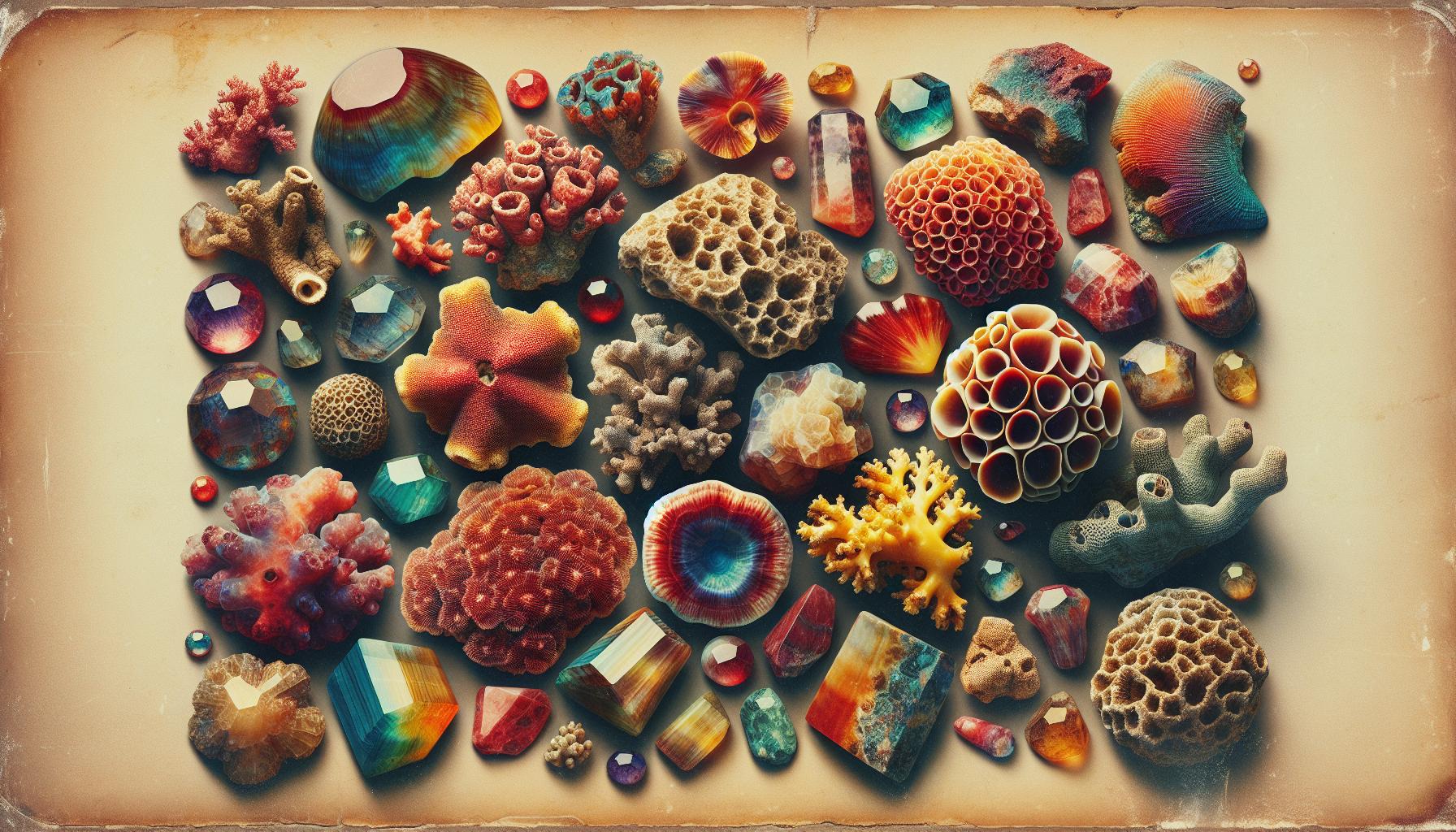
Color, Clarity, and Cut Quality
When you’re looking into the value of coral, color is one of the most significant factors. Vibrant hues like red, pink, and blue are especially desirable and command higher prices. Take note that the intensity and uniformity of the color can drastically influence value.
Clarity refers to how free the coral is from imperfections or blemishes. Higher clarity corals are rare, making them more valuable in the market. You’ll find that pieces free from cracks, pits, or dull spots are generally priced higher than those with visible flaws.
The cut quality of coral plays a critical role in its aesthetic appeal. A well-cut coral will be symmetrical and well-proportioned, enhancing its color and clarity. Coral pieces shaped into beads, cabochons, or intricate carvings are often sold at a premium due to the skill required to shape them without causing damage.
Market Demand and Availability
The price of coral is also heavily influenced by market demand. With the increasing awareness of conservation efforts, the demand for ethically sourced and environmentally sustainable coral is on the rise. You’ll notice sustainable options often come with a higher price tag due to their limited availability and the additional costs associated with responsible sourcing.
The availability of certain types of coral also affects their cost. Overharvesting and environmental changes have made some coral species scarce. Hard corals, in particular, are subject to tight regulations to prevent their populations from declining further. As a result, legally harvested pieces from healthy populations are more expensive than ever before.
Keep in mind that local and international regulations may restrict coral trade, further complicating availability and buoying prices. You’ll see that as the availability of legal, high-quality coral dwindles, its value in the market continues to climb.
Understanding Coral: A Rare Gem

The Rarity of Coral
Coral isn’t just another stone; it’s a marine gem with a story as deep as the oceans. Unlike minerals that are dug from deep within the earth’s crust, coral is organic, formed by living organisms known as polyps. Coral’s rarity stems from its unique formation process and habitat requirements, including clean, shallow waters ranging from 18 to 28 degrees Celsius, making it sensitive to environmental changes. But it’s not just about the rarity of conditions; legal and conservation frameworks significantly limit coral harvests to protect these fragile ecosystems. As such, high-quality coral pieces are treasures of the sea, often available in limited quantities.
Red coral, or Corallium rubrum, is particularly scarce and, as a result, highly sought after. Add in the slow growth rate of just a few millimeters per year, and you’ll understand why this gem is as rare as they come.
Origins and Characteristics
Coral reefs, often referred to as the rainforests of the sea, are found in more than 100 countries, but not all produce the coveted gem-quality coral. Major sources include the Mediterranean Sea for renowned red coral and the waters off of Japan, Taiwan, and Hawaii for pink and angel skin coral, highlighting a geographical diversity that adds to the wonder of this organic gem.
Coral’s characteristics are as diverse as their origins. They range from soft, delicate structures to harder, more resilient forms that lend themselves well to jewelry. Key features include:
- Color: Coral can display a wide spectrum of colors, from deep reds to soft pinks and even white.
- Texture: Some corals have a smooth, matte finish, while others shine with a glossy sheen.
- Size: Coral formations present variety in size, from small branches to large colonies, influencing their application in different designs.
In terms of quality factors, coral is often evaluated on its uniformity of color, lack of surface blemishes, and overall aesthetic appeal. The warm luster that emanates from high-quality coral is a testament to its enduring beauty and distinction among gemstones.
Coral Grading and Valuation
The Grading System for Coral
When you’re in the market for coral, understanding its grading system is pivotal. Much like diamonds, corals are graded based on certain criteria that affect their value. Here are the key factors that experts consider when grading coral:
- Color: The most prized coral color is a deep red, often referred to as “oxblood”. However, corals come in a range of colors from pink and white to blue and black, and each hue has its own market.
- Size: Larger pieces of coral are generally more valuable as they offer more possibilities for use in jewelry and decorative items.
- Shape: Corals with uniform and symmetrical shapes are preferred for their appeal in jewelry settings.
- Surface Quality: Smooth corals with minimal blemishes or pores are considered higher quality and are more valued.
These factors combined create a grading scale from the finest quality AAA coral, which displays all the best features, to lower grade corals that might have imperfections or less desirable characteristics.
Certification and Appraisal
To ensure you’re getting what you pay for, look for certified coral. A Certification of Authenticity can significantly increase confidence in the purchase and the value of the coral. This certification should affirm that the coral is natural and has not been treated or dyed.
Appraisal is another step to gauge the worth of coral. An appraiser will examine the coral’s:
- Color consistency
- Natural textures
- Surface quality
Professional appraisals document the value of your coral based on current market trends and provide authenticity that can be crucial, especially in high-value transactions.
When seeking a certified appraisal, make sure to go to a recognized professional who specializes in coral. Their expertise ensures that you get a fair assessment of your coral’s value and maintain its value for insurance or resale purposes.
Organizations like the Gemological Institute of America (GIA) can provide both certification and appraisal services, giving you peace of mind in your coral transactions. However, it’s important to remember that the market fluctuates and so does the value of coral. Regular appraisals will help keep up with the current worth of your pieces.
Current Market Trends in Coral Pricing
When delving into current market trends in coral pricing, it’s vital to understand that demand for high-quality coral continues to outstrip supply. The ongoing push for sustainable resources has shifted buyer preferences towards environmentally responsible sources. This shift often results in a premium on coral that’s harvested with minimal ecological impact.
To further complicate the pricing landscape, geopolitical conditions may disrupt coral supplies, occasionally spiking prices. In recent times, the luxury goods market has seen an influx of wealth from emerging economies, which, in turn, boosts demand and prices for premium coral pieces.
Recent data points to a steady increase in coral prices, particularly for red and pink corals, often dubbed as the royalty of corals due to their vivid hues and rarity. Let’s take a closer look at the numbers:
| Coral Type | Percentage Increase | Time Frame |
|---|---|---|
| Red Coral | 7-10% | Yearly Average |
| Pink Coral | 5-8% | Yearly Average |
It’s important to note that while percentages provide a ballpark, the actual value of individual coral pieces can vary widely based on the grading factors previously mentioned. Larger pieces with desirable shapes and exceptional color can see price hikes that far exceed the average increases.
Contrary to the high-end market, common corals, such as those used in bead-making or smaller decorative items, face fierce price competition from synthetic or imitation products. This competitive edge sets a ceiling for their pricing, making them more accessible to a broader audience.
If you’re on the hunt for investment-grade coral, stay informed about the latest excavation regulations and import laws, as these can severely affect coral availability and, as a direct consequence, prices. Trade shows and auctions remain significant indicators of current pricing trends, often setting the benchmark for what the market values as the cream of the crop.
Keep your eyes on emerging markets and environmental policies—they’ll give you the clearest picture of where coral pricing is heading. As the allure of coral endures in jewelry and decor, the market remains dynamic, reflecting a dance between rarity, demand, and the ever-present call for conservation.
The Most Expensive Coral
When venturing into the high-end coral market, you’ll find that certain types stand out for their hefty price tags. Black coral, for instance, holds a revered position due to its lustrous sheen and rarity. Often utilized in fine jewelry and ornamental pieces, black coral’s value can reach astounding levels, especially when it’s harvested from deeper, more inaccessible ocean depths.
Aside from black coral, red and pink corals—particularly those hailing from the Mediterranean—top the charts in terms of value. These corals are prized for their warm hues and smooth texture, often fetching thousands of dollars for a small piece. Such steep prices are attributed to their scarcity and the stringent regulations governing their collection.
Red and pink corals
- Used in luxury goods
- Price influenced by depth of harvest
Black Coral
- Sourced primarily from the Mediterranean
- High demand among collectors and designers
Recent years have seen the emergence of blue coral as a contender in the precious coral market. Its striking color, which ranges from subtle to vibrant shades of blue, makes it a unique and sought-after item for connoisseurs and high-end jewelers. Though it’s less commonly found in the market compared to red and pink corals, a piece of quality blue coral can command a price akin to fine gemstones.
Market fluctuations can significantly affect the value of these coveted corals. Price differentials hinge on various factors, including color purity, size, and the presence of natural patterns. Collectors are willing to pay premium prices for pieces that showcase unique natural artistry—an aspect that’s becoming increasingly rare as coral populations face environmental threats.
In your search for the most expensive corals, it’s crucial to ensure authenticity. Investing in expert appraisal and demanding a certificate of authenticity is essential in protecting your investment. Trade shows and private collectors often present opportunities to acquire these precious coral pieces where your due diligence in verifying their legitimacy can pay off greatly.
Buying Coral: Tips and Recommendations
When venturing into the market to buy coral, it’s crucial to have a keen eye and knowledge of what sets high-quality pieces apart from the rest. To assist you in this endeavor, here are some valuable tips and recommendations on sourcing and verifying the best coral pieces for your collection.
Where to Purchase High-Quality Coral
Reputable Dealers and Jewelers
Finding the right seller is paramount when you’re looking to purchase high-quality coral. Always opt for reputable dealers and jewelers who have a proven track record of providing authentic pieces. Online reviews and client testimonials can be invaluable in gauging the credibility of the source.
Auctions and Estate Sales
Auctions and estate sales can also be goldmines for rare, high-value coral pieces. Keep an eye out for these events, but ensure you’ve done your homework beforehand. Being knowledgeable about the market value and characteristics of top-grade coral can help you make informed bids.
- Trade Shows and Exhibits
Another avenue to explore are trade shows and specialty exhibits. These events bring together a multitude of vendors and experts where you can examine a variety of corals up close. They often provide opportunities to engage directly with industry professionals, offering a deeper insight into the coral’s value.
Ensuring Authenticity and Value
Request Certification
To ensure the coral you’re purchasing is genuine, always insist on receiving a certificate of authenticity. This certificate should provide details such as the coral’s origin and an assurance that it meets all legal and ethical standards.
Appraisal from an Independent Gemologist
For pieces of significant value, consider obtaining an appraisal from an independent gemologist. These experts can verify the coral’s worth and ensure that you’re paying a fair price for its quality.
- Understanding Rarity and Demand
Remember, the rarity and demand for certain types of coral can drastically affect their value. Conduct thorough research or consult with experts to understand the current trends in coral pricing.
By following these tips and recommendations, you’re more likely to secure high-quality coral pieces that are not only beautiful but also a sound investment. Keep in mind that the world of coral is ever-evolving; staying updated with market trends and continuing your education on coral grading and certification will serve you well in your buying journey.
Conclusion: Buying & Selling Coral
Securing high-quality coral is about more than just its price tag. It’s about the beauty and the investment you’re making.
You now have the tools to navigate the market with confidence, ensuring you get the best value for your money. Remember that rarity and demand are key in determining coral’s worth, and with the right approach, you can add a stunning and valuable piece to your collection.
Trust in your newfound knowledge and enjoy the journey of discovering the true worth of coral.

